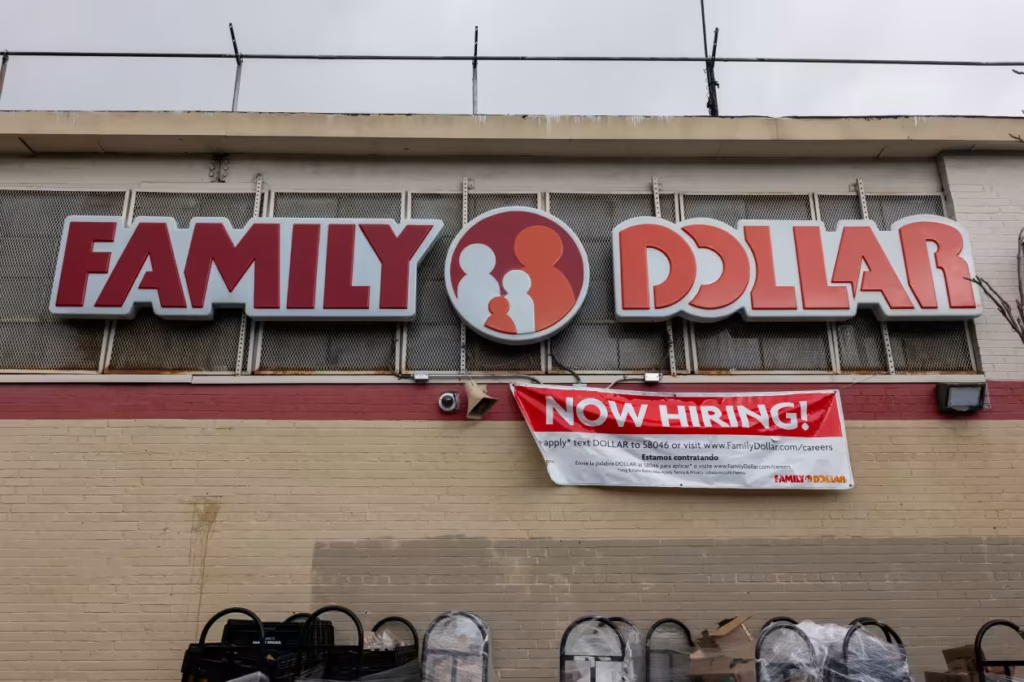Both Dollar Tree Inc. and archrival Dollar General Corp. were bidding for Family Dollar roughly ten years ago as the fast expanding dollar-chain sector established many new outlets. Executives of Dollar Tree (DLTR) said the $8.5 billion transaction was a “transformational opportunity” to offer more goods in more locations to more low-income consumers when it eventually completed on that bid in the summer of 2015. One heard references to “store productivity” and “cost synergies.”
That ambition, and the financials, never fully materialized even with some significant leadership changes and attempts to pump money into shop upgrades.
Dollar Tree gave in on Wednesday, declaring it would sell Family Dollar for $1 billion, substantially less than it paid for the business, to two private-equity companies. And despite the synergy-related excitement of the past decade, Dollar Tree Chief Executive Mike Creedon said Dollar Tree and Family Dollar were, in fact, “two different businesses with limited synergies” best off on their own.
Low-income consumers battling inflation, competition with Dollar General (DG) and mass-market retailers like Walmart Inc. (WMT), and logistics, too many store openings, poorly maintained stores and pricing are among the several reasons analysts cite for Family Dollar’s woes.
Melius Research analyst Karen Short said “Customers noticed that, and it was just a culmination of things that all needed fixing.”
Later on, “you have to paint stores,” she said. “You have to replace the tiles. You need to rearrange the shelves. That is simply daily.
Changes in leadership; variations in stores
Short pointed out that management worked to put up Family Dollar and Dollar Tree combo stores, clean Family Dollar outlets, and bring in less expensive products over years. It tried boosting freezer and cooler space, selling additional party supplies and booze, and redesigning storefronts.
After a pandemic-era boost, Family Dollar’s sales fell last year, according to FactSet statistics, and were predicted to drop even more. Profit margins still worried analysts. Mike Witynski departed his post as Dollar Tree’s chief executive in 2023; former Dollar General Chief Executive Rick Dreiling took his place and brought with him promises of a better comeback but left the chain in November owing to health problems. Replaced him was Creedon.
Dollar Tree first claimed that it was looking at “strategic alternatives” for Family Dollar last year following a year-of-announcement declaring around 970 Family Dollar stores would be closing. Although both Dollar Tree and Family Dollar share the term “dollar” in their titles, observers note that they have somewhat different characteristics.
About half of Dollar Tree’s sales are for a higher-end mix of discretionary items, like greeting cards and party supplies, said John Zolidis, president of Quo Vadis Capital. Targeting middle-income consumers with suburban sites sometimes directly next to a Walmart, the stores are meant to be somewhat more entertaining and more about the “treasure hunt” for discounts. Dollar Tree was reportedly the more profitable company of the two.
Like Dollar General, Family Dollar mostly markets to lower-income clients lots of low-priced goods including food, paper and plastics, household cleansers and health and beauty products. With the intention of attracting consumers on a limited budget or who simply need to pick up a few items, Family Dollar stores are typically in rural areas or metropolitan or downtown districts where Walmart isn’t.
Zolidis said such necessities can be available in many other places, even as price rises and a greater cost of living over the past few years keep many customers concentrated on the essentials. That has made Family Dollar’s stand out difficult.
“The consumables are something you can buy not just at dollar stores, but also at drugstores, big-box retailers, grocery stores – the products found pretty nearly everywhere,” he said. From a product standpoint, “they don’t really have a different assortment.”
Tracking retail foot activity, Placer.ai reported this week that dollar stores were labeled as “essential” stores when the epidemic struck in 2020, therefore boosting sales and driving Dollar General and Dollar Tree to maintain opening new locations. Later, though, the traffic increase of the stores decreased. And for Dollar Tree and Family Dollar, it moved opposite directions.
Visits to Dollar Tree climbed 5.4% year over year in 2024, a slow down from the 13.9% increase in 2023. For Family Dollar, though, traffic dropped 4% year over year.
Store problems, big-box rivalry, low-income customer challenges
At the expense of other discounters, the largest stores including Walmart, Costco Wholesale Corp. and Amazon.com Inc. also began stretching their power over that period.
Along with launching online delivery, pickup and drive-through options, they slash costs and begin selling smaller package sizes to draw customers making faster “fill-in” shopping excursions. In a note in November, BMO analyst Kelly Bania noted Walmart and Amazon (AMZN) were also providing more advantages to consumers utilizing government help. Richer consumers looking for a price break have also drawn Walmart’s attention; Costco (COST) sees those consumers as a larger prospect.
Over the past two decades, several observers claimed, the dollar stores had begun to fill their shelves with more discretionary goods—that is, things not absolutely necessary. Although that would make them unique, it might have hurt sales over the past few years since buyers gave basics first priority.
Short said Family Dollar had fallen behind Dollar General, which had sought out premium real-estate sites in an attempt to pursue Family Dollar. After Dollar Tree acquired Family Dollar, Zolidis claimed it lost a chance to leverage its sourcing knowledge to provide Family Dollar more in-demand discretionary products.
Dollar Tree and Family Dollar agreed to pay the U.S. Department of Labor to resolve store safety concerns including “blocked exits, access to fire extinguishers and electrical panels, and improper material storage at stores nationwide.” Dollar Tree agreed to create a 24-hour hotline to handle field safety concerns while the agency told the businesses to act to remove future risks.
Then there are personal challenges faced by consumers. Low-income consumers, who frequently visit dollar stores, have been most affected by price rises and the increasing cost of living over the past few years, according to both Dollar Tree and Dollar General. For its low-income customers, Dollar General said the year ahead seemed improbable to get any simpler.
“Our customers continue to report that their financial situation has worsened over the last year, as they have been negatively impacted by ongoing inflation,” Dollar General Chief Executive Todd Vasos remarked during the company’s earnings call this month.
“Many of our consumers say they only have enough money for basic needs, with some noting they have had to sacrifice even on the necessities,” he said.
‘legitimate questions’ on the direction of society
Against such background, numerous discount businesses have also teetered. Last year Big Lots Inc. sought bankruptcy protection. Also last year, 99 Cents Only Stores declared it will close among other things “shifting consumer demand” and “persistent inflationary pressures.”
According to Morningstar analyst Noah Rohr, the largest retail chains had more resources and clout to maintain low pricing in face of a general increase in all kinds of expenses. Dollar stores, he added, still had value in the retail environment, particularly in more thinly populated places where the next-closest retailer might be another 15 to 20 minutes away.
“There are reasonable questions regarding their existence,” he remarked. “Still, I believe they have a role in retail at least somewhat. They might not grow as quickly as they did in past years.
Short also mentioned that traveling to a brick-and-mortar store was occasionally still simpler and faster than waiting for a delivery of an internet purchase and that the dollar stores were smaller and more navigable for speedier journeys.
Regarding the Family Dollar sale, she said the agreement would have been worse for Dollar Tree considering the chain’s challenges over around two decades.
“Frankly, the fact that they were able to get proceeds from the sale of Family Dollar is amazing to me,” she remarked.





